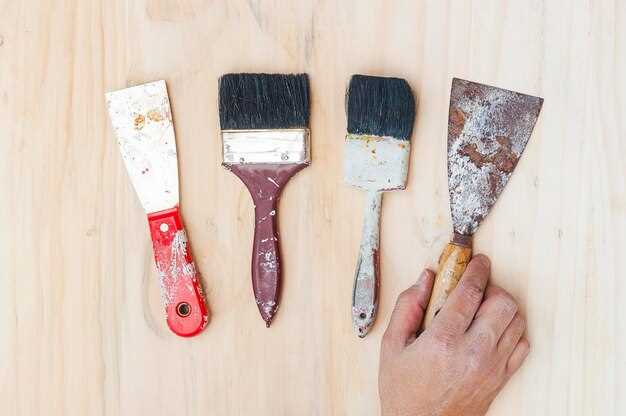
When it comes to restoration projects, one of the most debated topics is whether to undertake a DIY approach or to seek professional help from a shop. Each option presents its own unique set of benefits and drawbacks, which can significantly influence the outcome of your project, especially regarding your budget and the final quality of the restoration.
The DIY route often appeals to those who are eager to build their skills and hands-on experience. Undertaking the restoration personally can save money, as it eliminates labor costs associated with professional services. Additionally, the sense of accomplishment from completing a project on your own can be incredibly rewarding. However, this option requires a significant investment of time and may involve a steep learning curve, leading to potential mistakes that could ultimately jeopardize the restoration quality.
On the other hand, opting for shop restoration guarantees a level of expertise that can streamline the process and often results in a higher-quality finish. Professionals typically possess specialized tools and knowledge, allowing them to handle complex restoration tasks efficiently. However, this convenience comes with a cost; shop restoration can quickly become expensive, consuming a large portion of your project budget. Understanding the balance between these two approaches can help you make an informed decision that aligns with your goals and resources.
Cost Analysis: Comparing DIY Projects and Professional Shop Services
When it comes to restoration projects, understanding the financial implications of DIY efforts versus hiring a professional shop is essential for effective budget management. DIY projects often attract individuals due to their perceived cost-effectiveness, but hidden expenses can inflate the final budget.
In a DIY scenario, the primary costs include materials, tools, and possibly rental fees for equipment. While initial upfront expenses may seem lower than a shop’s quoted service, unforeseen complications can arise during restoration. For instance, purchasing specialized tools or extra supplies for repairs can quickly add to the total cost, sometimes surpassing that of professional services.
On the other hand, professional shop services typically provide a comprehensive cost estimate, which includes labor, materials, and expertise. While this initial expense may appear higher, it often represents a more predictable budget. Additionally, professional restorers usually have access to advanced technology and materials, ensuring the quality of the restoration meets industry standards, reducing the risk of future additional costs.
Overall, while DIY projects can offer savings on labor costs, the potential for increased material expenses and time investment must be considered. Conversely, professional shops provide reliability and expertise that can justify a higher budget, particularly for complex restoration projects. Making an informed decision requires careful consideration of both options against the overall financial plan.
Skill Requirements: Assessing Your Ability for DIY vs Professional Help

When considering restoration projects, whether it’s for furniture, vehicles, or other items, you must assess your skills against the demands of the task. DIY restoration can be incredibly rewarding, allowing for personal expression and a unique touch to each project. However, certain skills are necessary to achieve a satisfactory result.
Basic knowledge of tools and materials is essential for successful DIY restoration. If you’re planning to build or repair items, familiarity with woodworking, metalworking, or upholstery techniques will significantly enhance your project’s outcome. Furthermore, understanding the properties of different finishes and adhesives can prevent costly mistakes that may arise from using incorrect materials.
In contrast, shop restoration offers the expertise of seasoned professionals who understand the nuances of various materials and restoration techniques. If you lack confidence or experience, professional help can ensure a high-quality finish that meets industry standards. Shops typically have access to specialized tools and equipment that can enhance the restoration process, providing results that may be difficult to replicate at home.
The complexity of the restoration also plays a critical role in determining whether to pursue a DIY approach or seek professional assistance. For simpler, straightforward tasks, like minor furniture refinishing, a DIY mindset might suffice. Yet, if your project requires extensive repairs or intricate detailing, enlisting a shop’s expertise may save time and yield a more polished result.
Ultimately, assessing your ability involves recognizing your skill set, understanding the project requirements, and weighing the potential learning curve against the benefits of professional craftsmanship. By evaluating these factors, you can make an informed decision on whether to tackle the restoration yourself or seek the help of skilled professionals.
Time Commitment: Evaluating Project Duration for DIY vs Restoration Shops

When considering a project, time commitment is a critical factor in choosing between DIY and professional restoration shops. DIY projects often require a significant investment of time, especially if you are learning as you go. The process of researching materials, gathering tools, and building can stretch timelines, particularly for beginners. Projects can take weeks or even months, depending on complexity and your available schedule.
In contrast, restoration shops typically operate with experienced teams and established processes, allowing them to complete projects more efficiently. However, this speed comes with its own constraints; turnaround times may vary based on the shop’s workload and your specific restoration requirements. Professional services may fast-track your project but can also add delays if unique adjustments are needed.
Another aspect to consider is the budget. DIY projects might seem more economical at first glance due to lower labor costs. However, unexpected challenges and time delays can lead to increased expenses. On the other hand, while restoration shops have higher upfront costs, the potential for a quicker turnaround might save you money in the long run if time is a crucial factor for your project.
Ultimately, determining which option aligns with your needs involves assessing both the time commitment and the value of your time versus the potential cost savings. Whether you decide to build yourself or hire a shop for restoration will hinge on your priorities regarding quality, budget, and how much time you are willing to invest in the project.






